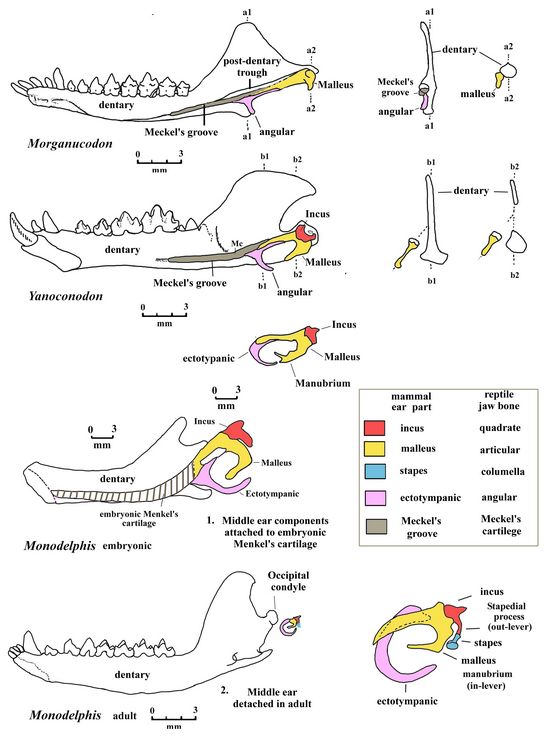Athena Review Image Archive ™
Middle Ear and Meckel`s groove in stem mammals

Middle Ear and Meckel`s groove in stem mammals (after Luo 1994)
A diagnostic feature of reptilian jaws called Meckel's groove, which contains Meckel's cartilage, appears in mammals only during early weeks of embryonic growth around the development of the ear region.
An attenutated version of Meckel's groove is also present in the adult forms of the early, Jurassic mammals named morganuconodonts, as a primitive feature extending forward from the postdentary trough (see top example in figure).
These (the postdentary trough, and Meckel's groove) are among the most diagnostic landmarks of the lower jaw bones, which enable the accurate classification of fossils as either early mammals, mammaliformes (called stem mammals), cynodonts, or other non-mammals.
In the case of morganuconodonts, both Meckel's groove and the angular bone in the trough are more reduced than in Sinoconodon or nonmamalian cynodonts
References:
Kielan-Jaworowska, Z, Luo, Z-X, Cifelli, R.L. 2004. Mammals from the Age of Dinosaurs. Columbia University Press, Chapter 4.
Luo, Zhe-Xi 1994.
Copyright © 1996-2020 Rust Family Foundation (All Rights Reserved).